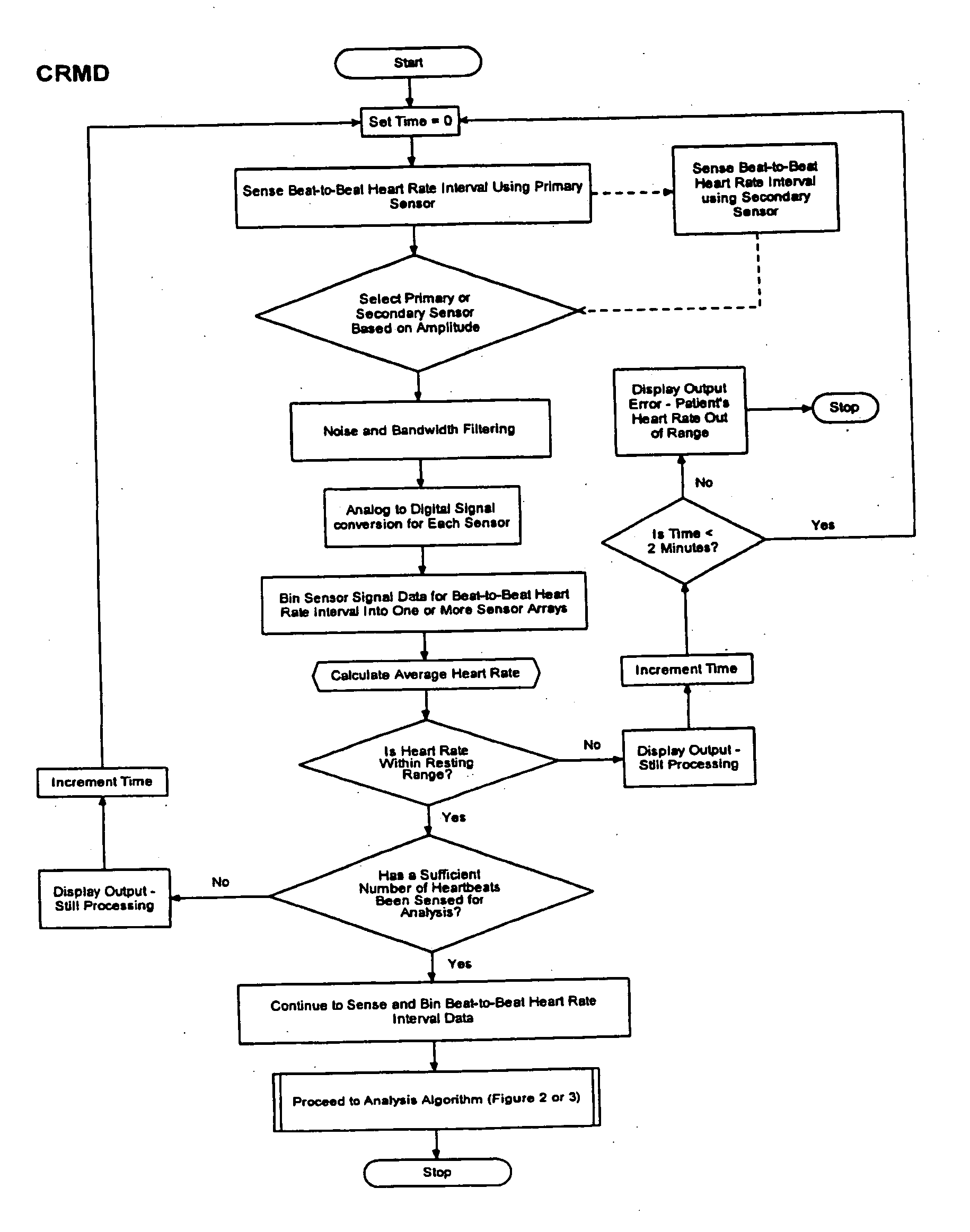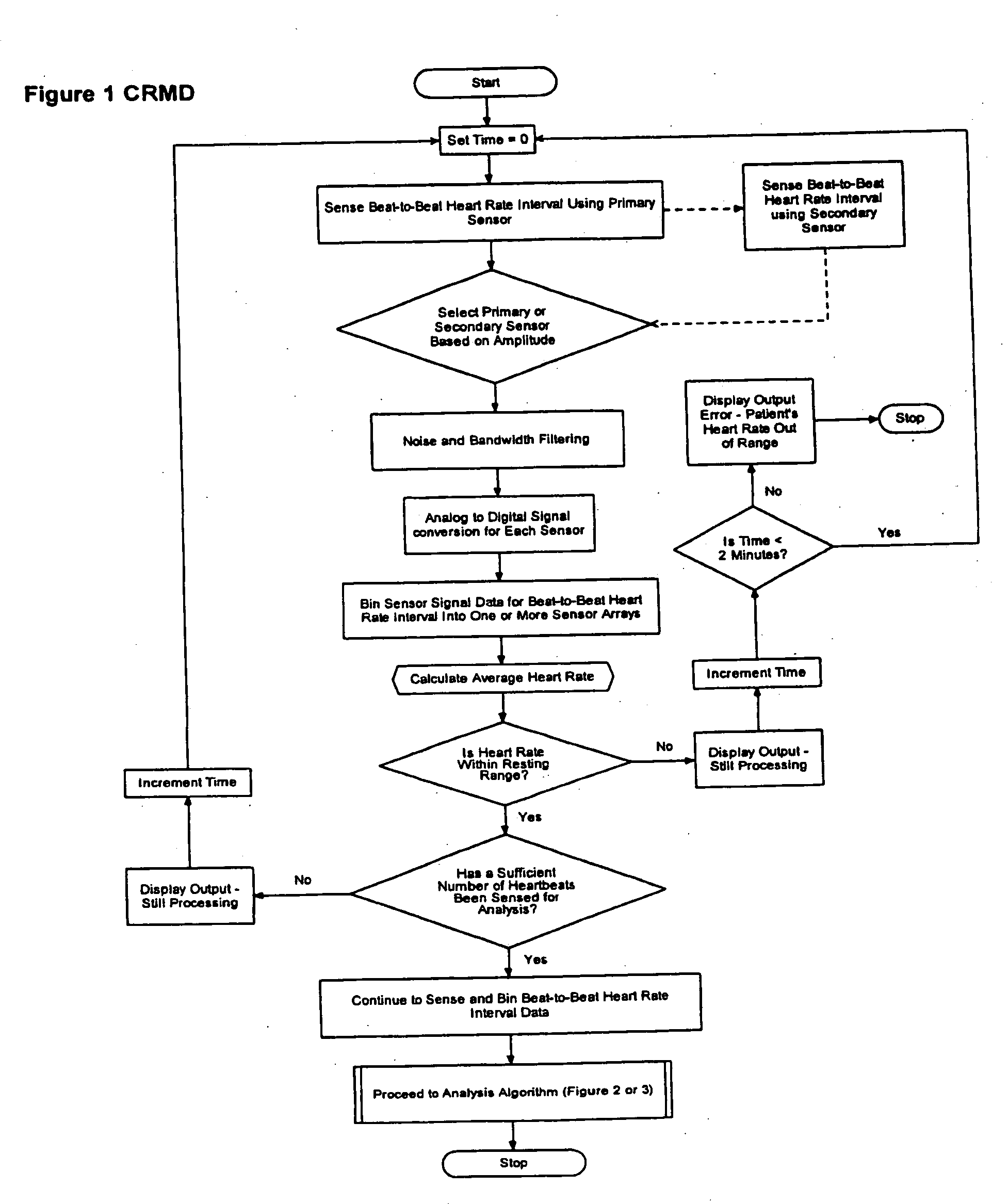Cardiac rhythm monitoring device
a monitoring device and rhythm technology, applied in the field of cardiac rhythm monitoring devices, can solve the problems of more dangerous arrhythmias, stroke or other complications, and fairly dangerous side effects
- Summary
- Abstract
- Description
- Claims
- Application Information
AI Technical Summary
Benefits of technology
Problems solved by technology
Method used
Image
Examples
Embodiment Construction
[0035] The CRMD, generally designated by the numeral 10, is a medical instrument that executes a particular procedure to determine if a patient's heart rhythm indicates possible supraventricular arrhythmia. More specifically, in the preferred embodiment the CRMD 10 executes the procedure shown generally in FIG. 1 for determining if a patient's heart rhythm has indications of supraventricular arrhythmia. First, the CRMD 10 senses the patient's beat-to-beat heart rhythm, measuring the R-R interval between heartbeats. This data is temporarily stored (typically in a computerized array) for use in the detection algorithm. The input data or the results may also be stored for analysis later by medical professionals. One of the analysis algorithms shown generally in FIGS. 2 or 3, depending upon the number of sensor inputs available, is used to determine if the patient should be warned about supraventricular arrhythmia. If there is only one sensor input regarding the patient's beat-to-beat h...
PUM
 Login to View More
Login to View More Abstract
Description
Claims
Application Information
 Login to View More
Login to View More - R&D
- Intellectual Property
- Life Sciences
- Materials
- Tech Scout
- Unparalleled Data Quality
- Higher Quality Content
- 60% Fewer Hallucinations
Browse by: Latest US Patents, China's latest patents, Technical Efficacy Thesaurus, Application Domain, Technology Topic, Popular Technical Reports.
© 2025 PatSnap. All rights reserved.Legal|Privacy policy|Modern Slavery Act Transparency Statement|Sitemap|About US| Contact US: help@patsnap.com



